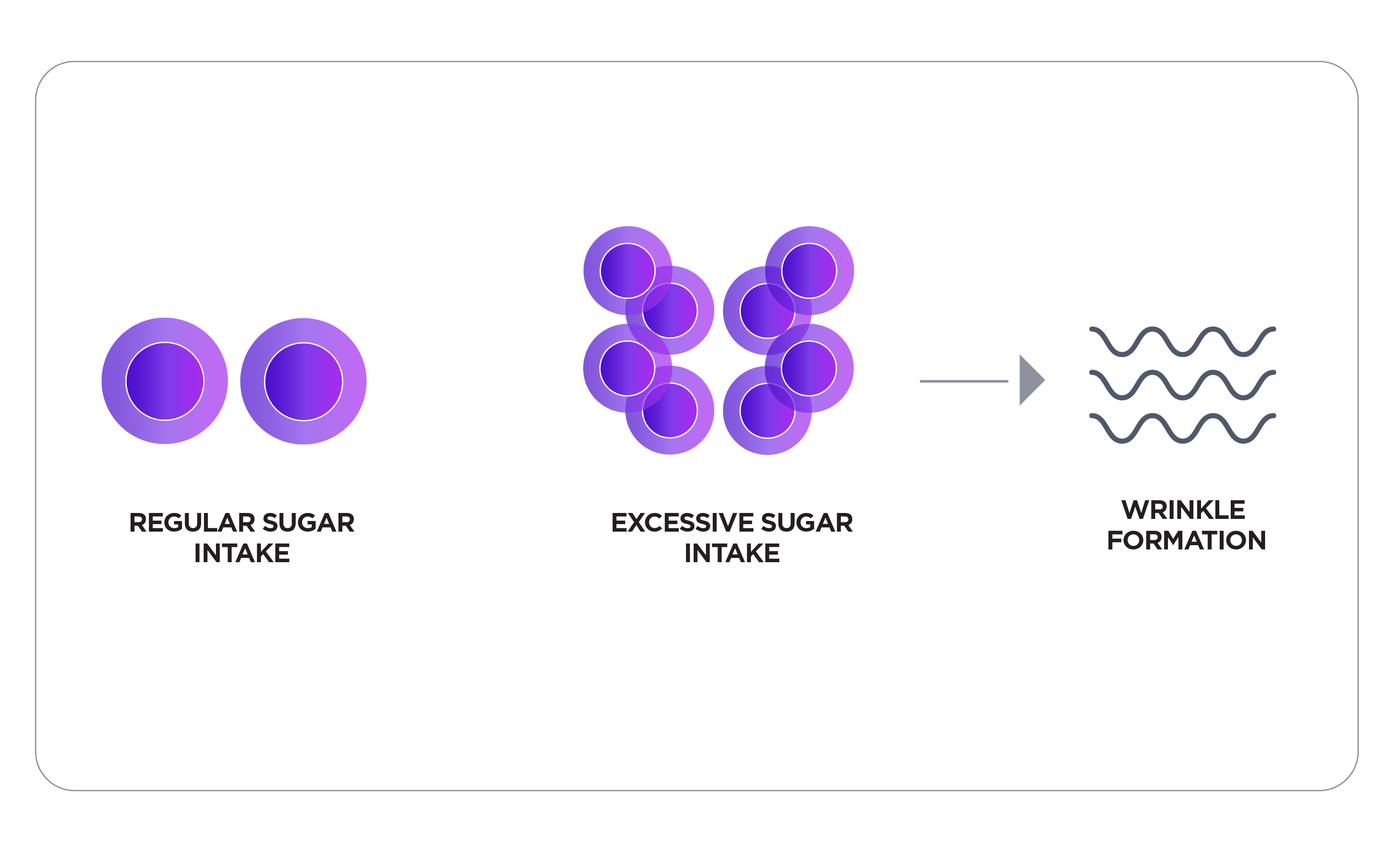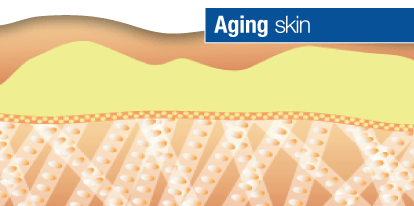-




Learn about your genetic risk
Wrinkling (Glycation)
If you’re like most people, then no one has ever told you about glycation. Affecting Collagen and Elastin fibers, glycation is now well recognised to be a leading cause of accelerated skin aging.

Heavy Wrinkles & Folds

Aging Eyes

Skin Textural Issues
Visible signs associated with Wrinkling (Glycation)
Did you know?
1 in 2 people
Are genetically predisposed to reduced genetic protection against Glycation.

About this category
What is Glycation?
Glycation is a leading cause of skin aging. Are you genetically at risk?
Glucose is the sugar your body uses as its main source of fuel. If not metabolized properly, glucose can bind to your skin’s collagen and elastin fibers, forming abnormal chemical bridges that cause tissue damage. This process, called glycation, causes your skin to become rigid and lose elasticity.
Glycation also impairs your skin’s ability to regenerate, which leads to skin laxity, cracking, thinning, redness, and inability to self-repair.
What your genetics have to do with it
The genes that make up your Wrinkling (A.G.E.) score play a key role in skin Glycation. They are responsible for controlling serum glucose levels, energy intake and energy release.
Having variations in these genes can alter the functioning of normal glucose levels and energy metabolism. While glucose is a vital cellular fuel, if not completely metabolised by the body Glycation can occur, leading way to wrinkling, dryness and laxity.
Sugar and Wrinkles

Background Science
Genes Tested
SkinDNA™ Designated Descriptors
Gene s400976
Glycation Interruption
Responsible for controlling serum glucose levels, energy intake and release. While glucose is a vital cellular fuel, if not fully metabolised Glycation can occur.
Glycation has been described as carmelization of the skin from the inside out. The skin-damaging effects of glycation cause wrinkles, dryness (eczema), skin laxity, as well as acne and rosacea.
Advanced Glycation End Products (A.G.Es) are the end result of a glucose-driven process known as Glycation. Glycation occurs when excess bodily glucose molecules link to the skin’s Collagen and Elastin fibers. This cross-linking can form chemical bridges between these proteins. Glycated fibers can become rigid, less elastic and have reduced regenerative ability, which can lead to damage such as laxity, cracking and thinning skin.
“Causing Collagen and Elastin fibers to lose their ability to function normally, glycation is heavily implicated in accelerated skin aging.”

In young skin, the Dermal Epidermal Junction has the appearance of a mountain range that helps anchor the Epidermis to the Dermis, forming a network of supportive Collagen fibers.

As your skin ages these supportive fibers—which are responsible for the appearance and texture of your skin—lose their supportive network as a result of glycation.
Our genetic predispositions play a big role in determining serum glucose levels. Key variations in this genetic category play a key role in preventing glycation of your skin.
It is responsible for controlling serum glucose levels, energy intake, and energy release. Having variations in this gene can alter your body’s ability to maintain normal glucose levels and interfere with energy metabolism, both of which lead to glycation.
Glossary
Not sure what some words mean?
Collagen
Collagen is the principle structural protein that holds the skin together.
Collagen is just one of thousands of different proteins in the body. The most abundant protein is collagen. In fact, collagen makes up more than one third of all protein in the body and about 75% of the skin.
Elastin
Elastin is a protein found in connective tissue that is elastic. In the skin, Elastin helps keep flexibility by providing a bounce-back reaction if skin is pulled or pinched.
Enough elastin in the skin means that the skin will return to its normal shape after a pull or a pinch. It also helps keep skin smooth as it stretches to accommodate normal activities like flexing a muscle or opening and closing the mouth to talk or eat.
Glucose
Glucose is the body’s prime source of fuel for generating energy. It is a type of sugar that comes from digesting carbohydrates into a chemical that we can easily convert to energy.
But glucose has its dark side. If not properly metabolised Glucose can bind tightly to proteins and form abnormal chemical bridges that progressively damage tissue elasticity. This process is referred to as Glycation.
Glycation
Glycation occurs when excess bodily glucose molecules link to the skin’s Collagen and Elastin fibers.
This cross-linking can form chemical bridges between these proteins. Glycated fibers can become rigid, less elastic and have reduced regenerative ability, which can lead to damage such as laxity, cracking and thinning skin.

Copyright 2018. All rights reserved.
Made with [icon name="fa fa-heart" color="#e51b23"] by SkinDNA.
Test Categories
White Label
Contact
